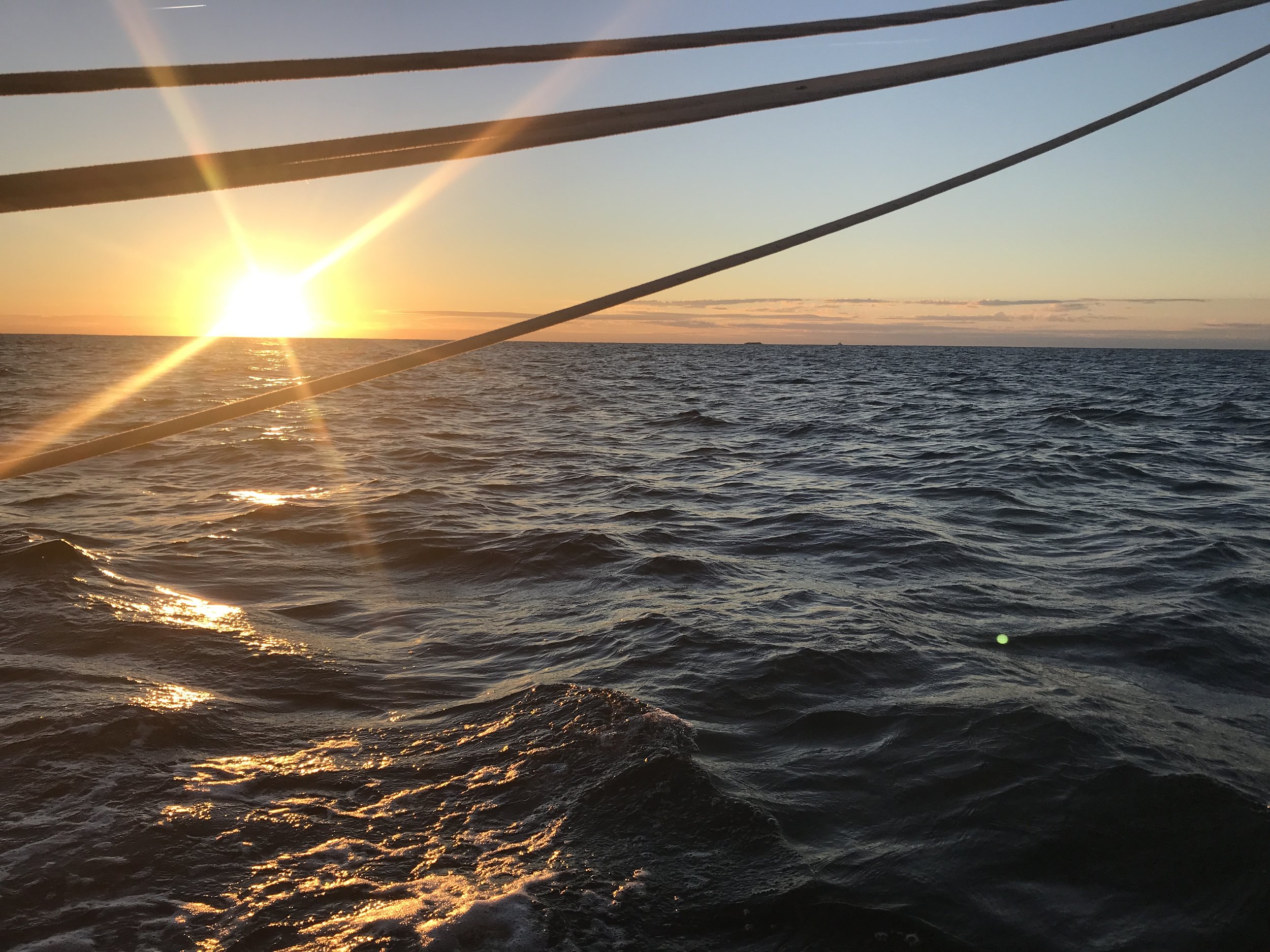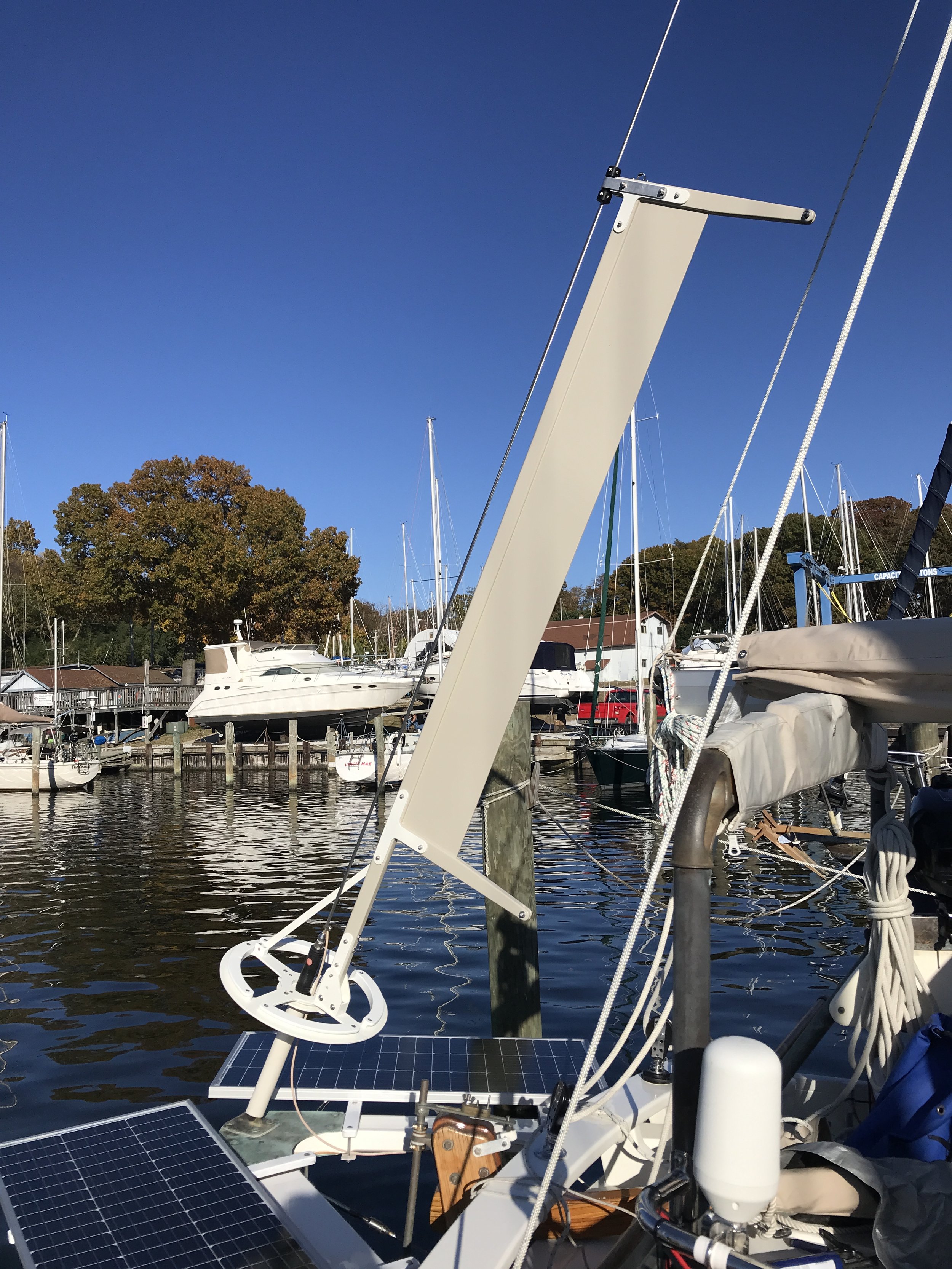Watch Schedule Considerations
We’re underway! Track our progress if you wish!
“So. When are we starting shifts?” We’d just finished doing the dinner dishes and had pulled out the harnesses we wear when it’s nighttime and we’re on passage. Larry, the mechanical windvane Jeremy finished up last weekend, was steering, stars were starting to wink in the darkening sky, and the wind and seas were so benign we hadn’t turned the engine off from when we left the dock. I yawned. Jeremy laughed. “Why don’t you go down now? I’ll see you at 10.” And with that, we’d started our watch schedule.
When you’re sailing from place to place, someone is “on watch” all the time. This is true whether it’s a couple of hour daysail or a multi-day passage - and yeah, when you’re mid-ocean, you don’t stop for the night. This does mean that even in the middle of the night, someone’s awake and in charge! How do you figure out who’s on when?
Halloween candy makes night watch better
What kind of a watch schedule to keep is another one of those “it depends” cruising decisions. Watches of shorter duration mean you’re not having to stay up for long stretches at a time; it also means you don’t get a lot of straight stretches of sleep. Deciding on the balance can be tricky.
When we’re on short sails, our watchkeeping is much less official. We’re generally both in the cockpit, hanging out and enjoying the sail. There might be a project happening and the other person is tasked with being in charge of the boat, but it’s pretty loose. No need for official when we’ll be at anchor that night. For longer voyages, an official rotation of some sort helps keep the peace, plus is an important safety consideration. Sleep deprivation has been shown to be more detrimental to focus and reaction time than over-imbibing of alcohol.
Offshore on Calypso, we’ve always done 3 hour watches during the night, with more flexible timing during daylight hours. We used to start the rotation at 10 pm; during summer 2021 we experimented with starting watches more like 8. That worked really well; I could get in a solid nap while Jeremy took the first watch, then I had the 11-2 and again the 5-8. This fit with our natural tendencies of sleep/wake and didn’t feel like as much of a slog. I’ll often stay on longer in the morning, letting him sleep in, and then I head for a good nap after he’s up. We keep the same watch schedule; sleep research has shown it’s easier to be on a disrupted schedule like this if the disruption is at least consistent. How did we decide on 3 hour watches? I think we read about it in some book long ago. And 3 feels good. It’s enough time to settle into a routine in the cockpit yet short enough that we don’t lose focus. The sleep is reasonable enough, especially with a nap sometime in the day, that we’re not tired. There are times, of course, when extra hands are needed (like when the wind shifted from 5 knots on the nose to 25 knots from behind us in the span of about 5 minutes last night) - generally we try to let the person get all their off-watch sleep!
Sunset at sea
When we crossed the Atlantic with our friends on Pelican Express, there were 4 of us to share the duties. We did a modified rotating 4 hour schedule, with one person ON for 2 hours, while another was on standby. This went on around the clock. Once you’d done standby for 2, then ON for 2, you were off for 4 blissful hours. Everyone had a chance to be with everyone else; everyone rotated through the middle of the night watches. I don’t remember this being a tough schedule at all - it was, however, decades ago!
My friend Kristen on Sailing Positive Waves and her husband, Hans, do 6 hour watches, and if I recall correctly do this 24 hours a day. They’ve morphed their schedule over their years of cruising from the 2-on-2-off routine they started with. 6 hours means they each get to get into the groove of being on watch and then enjoy a very solid sleep session; she raves about this schedule and I think it might be one we experiment with as well, especially on our longer upcoming passages. Behan, on Sailing Totem, has noted that this shift to longer watches is one that happens on many cruising boats. You start with shorter sessions of being in charge (especially at night) and gradually settle to longer periods that enable longer sleep.
(One thing of great importance to note. It is my strong opinion that the most valuable piece of gear any short handed crew planning on long passages can have is a robust autopilot. With a backup. Steering the boat by hand all the time is exhausting and would make figuring the watch schedule balance between sleep needs and time in charge a more tricky one. We have both an electric pilot (2, in fact) as well as the mechanical self-steering one that Jeremy built.)
Meet Larry, our mechanical self steering gear
About the only absolute for a watch schedule aboard is that you do need to have one if you’re doing overnight passages. Whether it’s 2 hours, 3, 4, or even 6 (or longer?), knowing who’s in charge and whose turn it is to sleep is critical. Don’t be afraid to experiment to see what works for you!



